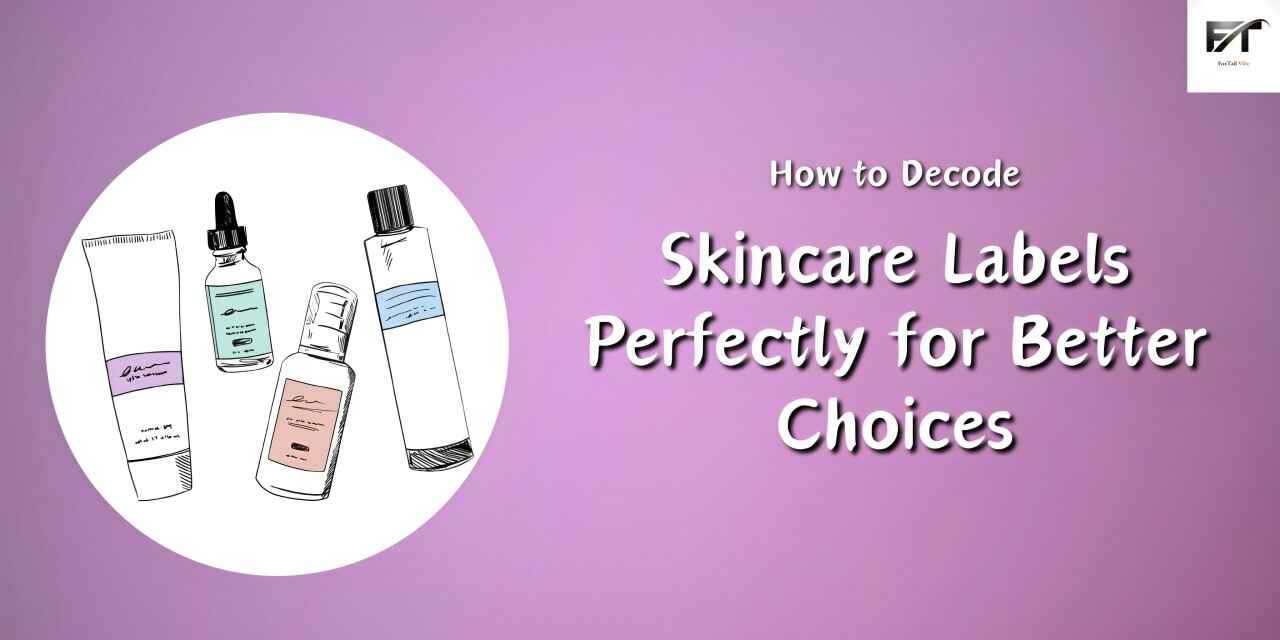In the vast world of skincare, understanding the labels and ingredients listed on your favorite products can sometimes feel like trying to decipher a secret code. From “hyaluronic acid” to “retinol,” there’s a whole host of buzzwords floating around that promise glowing skin and ageless beauty. But what do these terms really mean, and how do they affect your skin? Let’s delve into the world of skincare ingredients and labels to uncover the truth behind the buzzwords.
1. The Basics: Understanding Skincare Labels
Before we dive into specific ingredients, let’s first decode the labels commonly found on skincare products. Here are a few key terms you might encounter:
- Active Ingredients: These are the star players in your skincare products—the ingredients responsible for delivering the promised benefits, such as hydration, brightening, or anti-aging effects.
- Inactive Ingredients: While not as flashy as their active counterparts, inactive ingredients play crucial roles in skincare formulations. They can include emulsifiers, preservatives, and texture enhancers that contribute to the overall stability and feel of the product.
- Fragrance-Free vs. Unscented: “Fragrance-free” means the product contains no added fragrances, making it suitable for sensitive skin. “Unscented,” on the other hand, may still contain masking fragrances to neutralize any inherent odor from other ingredients.
2. Common Skincare Ingredients: What They Do

Now, let’s take a closer look at some popular skincare ingredients and their benefits:
- Hyaluronic Acid: Don’t let the word “acid” scare you—hyaluronic acid is actually a hydrating powerhouse. It’s a humectant, which means it draws moisture from the environment into your skin, helping to plump and hydrate it.
- Retinol: Known as the gold standard in anti-aging skincare, retinol is a form of vitamin A that encourages cell turnover, stimulates collagen production, and reduces the appearance of fine lines and wrinkles.
- Vitamin C: This antioxidant powerhouse brightens the skin, evens out skin tone, and protects against environmental damage caused by free radicals. Look for stabilized forms of vitamin C, such as ascorbic acid or sodium ascorbyl phosphate, for maximum effectiveness.
- Glycolic Acid: A type of alpha hydroxy acid (AHA), glycolic acid gently exfoliates the skin, removing dead skin cells and promoting cell turnover. It can help improve skin texture, reduce the appearance of pores, and fade dark spots.
3. Reading the Fine Print: Ingredient Lists
When scanning the ingredient list on a skincare product, keep an eye out for these key points:
- Order of Ingredients: Ingredients are listed in descending order of concentration, meaning the first ingredient listed is present in the highest amount. Pay attention to the first few ingredients, as they have the most significant impact on the product’s performance.
- Allergens and Irritants: Be aware of common allergens and irritants, such as fragrances, essential oils, and certain preservatives like parabens. If you have sensitive skin, opt for products labeled as fragrance-free and hypoallergenic.
- Expiration Date: Skincare products, especially those containing active ingredients like retinol or vitamin C, can lose their efficacy over time. Look for the expiration date or the “period after opening” symbol, which indicates how long the product remains stable after it’s been opened.
4. The Power of Patch Testing
Before slathering a new product all over your face, it’s always a good idea to perform a patch test. Apply a small amount of the product to a discreet area of your skin, such as the inner forearm, and wait 24 to 48 hours to see if any adverse reactions occur. This simple step can help prevent potential irritation or allergic reactions.
Conclusion: Knowledge is Key
Understanding skincare ingredients and labels empowers you to make informed choices about the products you use on your skin. By decoding the beauty buzzwords and knowing what to look for on the label, you can build a skincare routine tailored to your skin’s unique needs. Remember to prioritize ingredients that have been proven effective through scientific research and always listen to your skin’s feedback. With a little knowledge and the right products, you’ll be well on your way to healthy, glowing skin.
Also Read – How to Find The Perfect Scent for Every Occasion
